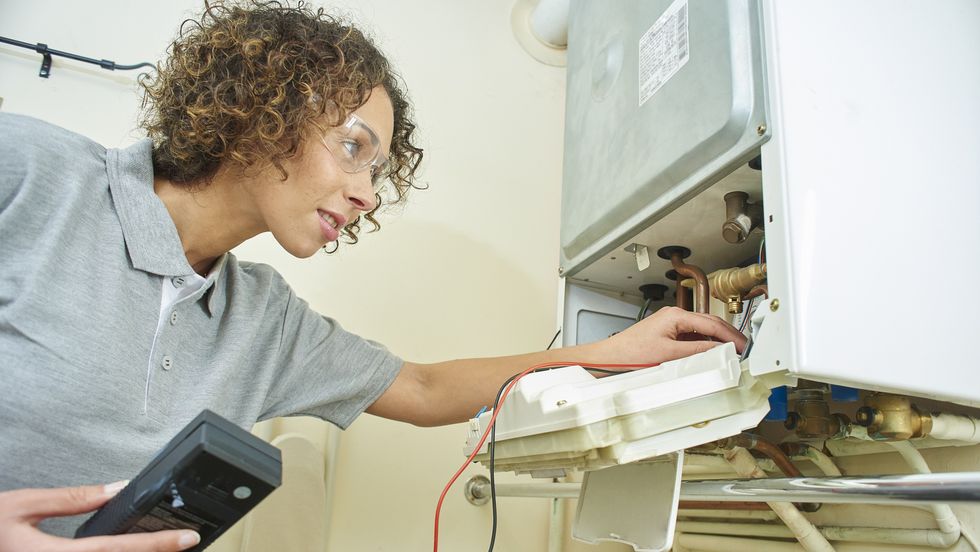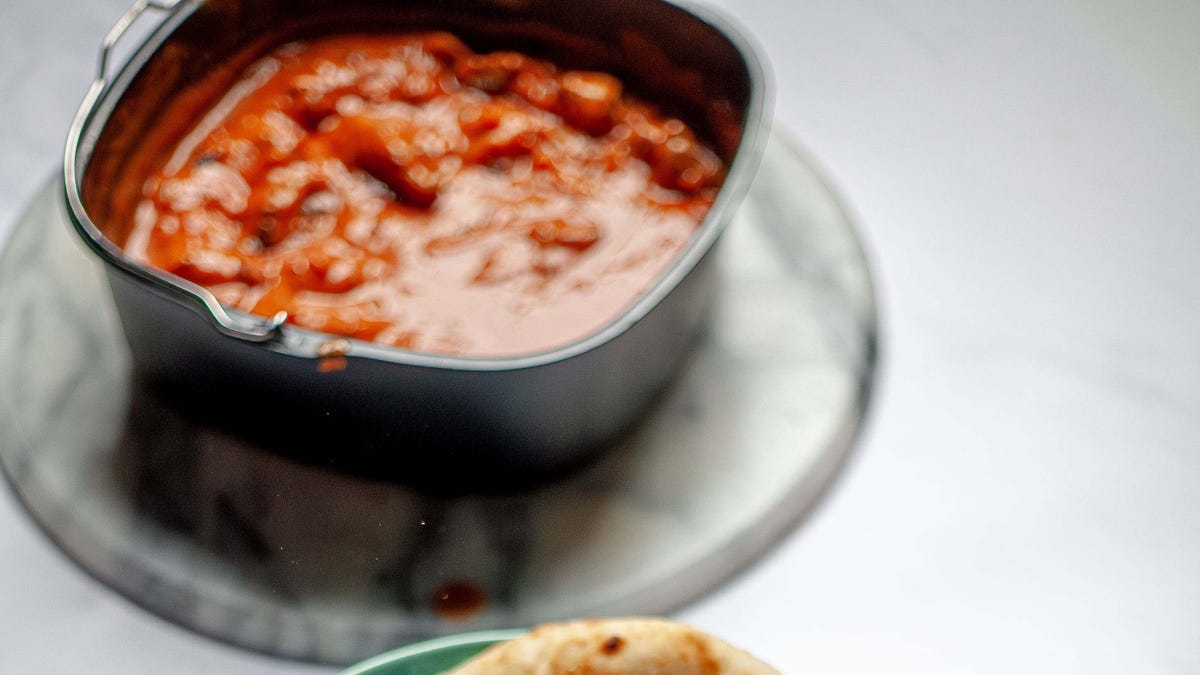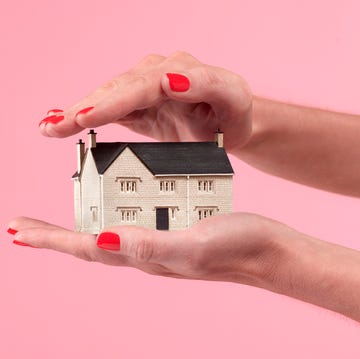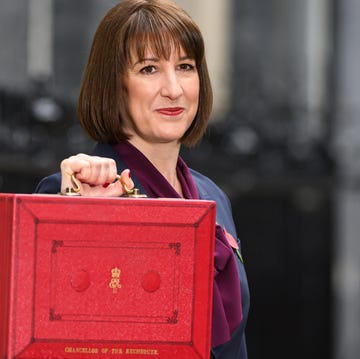The new Ofgem price cap will push up the typical household energy bill by 10% from 1 October, rising from £1,568 to £1,717 annually. Coming in at a time of year when many of us are reaching for the central heating controls and turning on the lights earlier in the day, it's time to deploy some serious energy saving tactics around the home. Last year, according to YouGov, 57% of us cut back on energy use to keep bills down.
First, make sure you are on the best fuel tariff for your needs going into winter. This is the season for fixed term deals so see what's on offer both from your existing supplier and the rest of the market - using comparison websites - and work out whether you would save by switching or fixing. Fixing will offer reassurance about how much you pay over the next 12 months but won't track any potential falls in the cost of energy. Remember to factor in any exit fees if you are thinking of leaving an existing contract early. Grab your energy statements for an up-to-date view of what you're paying and what you use, and start with MoneySavingExpert's Should You Fix calculator.
Now you are on track to get the best price possible for your energy, here are some invaluable tips on how to use less of it!
1. Take your devices off standby
You may have heard that leaving your devices on standby wastes electricity and wondered, how much of a difference can it really make? Well, here's your answer...
Energy Saving Trust (EST) estimates that you can save £65 a year by switching your appliances off standby mode. Apart from fridges, freezers and TV set-top boxes, almost all electrical appliances can be turned off at the plug.
Using smart plugs can make switching off less of a chore. Using an app on your smartphone, you can schedule when devices plugged into them are switched on or off. Or, simply set a timer so they’re switched off automatically after a certain period.
The Humax Wi-Fi Smart Plug allows you to see how much energy the plugged-in device is using too.
2. Adjust radiator settings
Heating our homes and the hot water we use accounts for roughly half the average household energy bill. So making simple adjustments to your central heating or hot water system can make the biggest dent on your energy spend and your carbon footprint. One of the most effective energy-saving tweaks you can make involves getting to grips with the controls on your radiators – best of all, it's easy and free.
Most of us have thermostatic radiator valves (TVRs) fitted on our radiators (the controls with settings numbered from one to five or six) but research shows that most of us probably aren't using them to their full energy bill-busting potential. "We know that many people use TVRs on radiators like an on-off switch, when actually radiator valves are like individual room thermostats," explains Katy King, deputy director of sustainable future Nesta, the UK's innovation agency for social good. "Each number signifies a certain room temperature and once that's reached, the radiator will 'switch off'."
Try turning yours down to the middle number on the dial (usually 3), which corresponds to a room temperature of around 20°C . Nesta's research shows that turning the TVRs in rooms other than the living room down by just one setting could shave around £95 off your energy bills each year and that three quarters of UK homes could benefit from this simple heating hack.
]
3. Change the flow temperature of your boiler
If your boiler isn’t set to run as efficiently as possible, you could be wasting up to a fifth of the gas you use at home, warns Jo Alsop, co-founder of The Heating Hub.
“A condensing boiler heats water to a certain temperature (called the ‘flow’ temperature) before sending it off to your radiators to heat your home,” she explains. “Most boilers are left on their factory settings, with a flow temperature 80°C. However, at a lower flow temperature of 55°C or 60°C, the boiler can recycle more of the heat it generates, which could save you around 6-8% on the cost of your gas bill.
“Your home should feel just as warm, provided it’s properly insulated,” she says. Ask your heating engineer about this next time you have your boiler serviced or visit The Heating Hub's website for more information and a step-by-step guide. British Gas also has a tutorial explaining how to do this.
4. Turn down the temperature of your hot water
Nesta's research also found that UK homes commonly have their hot water temperature set as high as 60°C; changing this to 42°C on a combi boiler could save almost three fifths of UK households an average of £17 a year on energy – and still be fine for washing dishes and enjoying hot showers.
However, if you have a hot water tank the stored water needs to be regularly heated to at least 60°C to reduce any risk of legionella so this is one temperature setting not to turn down.
5. Reduce water use
You may already be reminding everyone in the house to take shorter showers, fill the bath less and avoid rinsing dishes under a running hot tap. All of these measures will help save money on the energy used to heat your hot water. However, you may not have thought about how your shower head itself could also play a part in saving energy and cash.
By replacing your shower head with a water efficient one, you could save £45 on your energy bill (and £25 on your water bill if you have a water meter). You can buy one for as little as £15.
6. Rethink how you use your thermostat
We all know that turning your thermostat down by just one degree can save money, but how much of a saving are we talking about? Energy Saving Trust claims that you can reduce your energy bill by 10% by doing this.
You should put your heating on at the lowest temperature you’re comfortable with, which is between 18°C and 21°C for most people.
It’s also worth noting that it’s cheaper to put your heating on when you need it rather than keeping it on low all the time. Check that the time on your central heating controls is correctly set so that your heating comes on at the times of day when you need it. Smart controls that let you switch the heating to come on when you arrive home after work are ideal for this.
7. Bleed your radiators
If you haven’t done so already, bleeding your radiators regularly will help them work more efficiently. Check to see if yours are warm at the bottom but cool at the top — if so, they need bleeding to release the trapped air and allow them to fill with water.
"Heat is transferred to your radiators from the hot water that circulates around them, but when there is air in the system you will notice that your radiators do not get hot," says Jo Alsop. "This is because air is blocking the hot water from circulating fully."
You can bleed your radiators using a flathead screwdriver or a bleed key if you have one. Jo shares her five simple steps:
- Turn off your heating and wait until the radiators are cold. Start with the radiator furthest away on the ground floor and work back towards the boiler.
- The 'bleed point' will usually be at the top of the radiator on the right hand side. This will be a little square — on modern radiators this will be surrounded by white plastic.
- Put a cloth on the floor and hold another cloth under the valve as sometimes water can come out of the radiator as you bleed it.
- Put the bleed key or screwdriver into the valve and turn anti-clockwise.
- When water starts to come out, turn the bleed key or screwdriver clockwise to close the valve.
8. Move your furniture away from radiators
It may sound cosy to have the sofa right next to the radiator, but this isn’t the best idea when it comes to energy efficiency. Placing large items of furniture in front of your radiators can prevent warmth from reaching the rest of the room. Try moving it away at least an inch or two — you’ll notice that the room will get warm quicker, which makes better use of the energy you’re paying for to heat your home.
9. Use an app
There's a whole raft of new apps that allow you to monitor your energy consumption at home in real time using data from your smart meter, and make suggestions for changes tailored to you.
The ivie app (free) tracks energy usage, then offers personalised energy saving tips. Research by the app found that ivie users were able to shave an average of 18% off their electricity bill every month.
The Hugo app (free) provides information about how much electricity you're using in easy to understand graphs and charts. You can set alerts to notify you if your consumption goes over a set limit and also compare tariffs from other utility providers. Utrack (free) from the comparison site Uswitch, works in a similar way.
Don't have a smart meter? A home energy monitor clips on to the cable leading into your electricity meter and feeds data wirelessly to a display unit which tells you how much electricity you are using in kWh, how much it's costing you and how much of a carbon footprint you're creating.
10. Don’t forget about eco-mode
It may sound obvious, but it’s worth remembering to run your appliances on eco mode whenever you can. Most dishwashers and washing machines have this option, as well as some tumble dryers and even TVs.
Remember that an appliance's energy efficiency rating is determined by its performance on eco-mode, so if you’re not using this setting you're not making the most of the appliance's energy efficiency potential.
Cycles are likely to take longer on eco mode so try to plan ahead to avoid using a shorter but less energy efficient cycle because you find you're pushed for time.
LOOK FOR OUR LOGO!
Buying energy efficient appliances is one way to ensure we keep the costs of running our homes down as much as possible in the long-term. But how can you be sure that you're buying an appliance that will perform well in addition to using less energy? The new Good Housekeeping Institute Performance + Energy Efficiency logo provides peace of mind by showing that an appliance has not only passed our rigorous quality assessment tests for performance, but that testing at the GHI has also confirmed that its energy usage is consistent with the energy efficiency class shown on its label. You'll see the logo on a range of products, from washing machines to fridge freezers and ovens.















